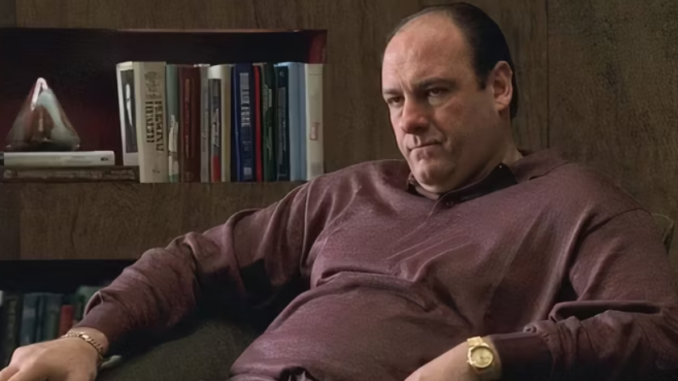
Why is James Gandolfini considered the best part of this forgotten gangster movie, five years after The Sopranos?
In 2012, filmmaker Andrew Dominik released a sequel to his critically acclaimed film, The Assassination of Jesse James by the Coward Robert Ford; it was called Killing Them Softly. Set during the 2008 presidential election, the film tells the story of a hitman hired to solve the unsolved problems left behind after a high-stakes Mafia poker game was robbed.
At the time of its release, Killing Them Softly was a misguided failure in almost every sense of the word, a film that earned the rarest of moviegoer points and burned away all the goodwill the relatively new filmmaker had built up for himself. If Killing Them Softly is remembered for anything these days, it’s because it was one of the last films to feature former Sopranos star James Gandolfini in the compelling role of down-on-his-luck ex-mafia hitman Mickey Fallon.
After The Assassination of Jesse James by the Coward Robert Ford, critics and audiences were left wondering what director Andrew Dominik would do next, and what they got in Killing Them Softly was nothing like anyone expected. A combination of dark atmosphere, relentless dialogue, morally corrupt characters, and a soundtrack that included pop and early jazz, Killing Them Softly is many things, yet frustratingly difficult to describe.
On the surface, Killing Them Softly is an adaptation of George V. Higgins’ novel Cogan’s Trade, and the powerful, politically charged tale was met with both open arms and clenched fists, depending on the viewer. Frankly, most audiences fell into the latter category. In fact, the emotional response to seeing Killing Them Softly was so strong for so many that it received a dubious “F” rating from CinemaScore audiences, making it one of only 22 films to ever receive such a rating.
Set in 2008, Frankie (Scoot McNairy) and Russell (Ben Mendelsohn) play two drifters recruited by Johnny “Squirrel” Amato (Vincent Curatola) to stop a high-stakes mafia poker game run by Markie Trattman (Ray Liotta). Squirrel believes that the gang will eventually blame Trattman for bragging about the incident, allowing the others to get away with it. What the three men don’t count on is that the gang has hired a cynical law enforcement officer named Jackie Cogan (Brad Pitt) to investigate the robbery and punish those responsible.
Along the way, Cogan enlists the help of another hitman he’s worked with before: Mickey Fallon, played by legendary actor James Gandolfini. Mickey’s mysterious presence in the film’s narrative and Gandolfini’s incredible performance make for one of Killing Them Softly’s most compelling subplots, and much of that has to do with the tragedy surrounding the actor’s death.
A native of New Jersey, James Gandolfini worked a series of odd jobs before becoming one of America’s most beloved actors, including truck driver, bodyguard, and nightclub manager in New York. Along the way, he took a series of acting classes with a friend and was hooked. In 1992, he made his Broadway debut in a revival of A Streetcar Named Desire alongside Alec Baldwin and Jessica Lange. The following year, he played a ruthless assassin who quotes the philosophy of Quentin Tarantino’s True Romance, directed by Tony Scott.
That role, in turn, paved the way for James Gandolfini to land the lead role in HBO’s The Sopranos, a gangster family epic that ran for six seasons beginning in 1999. Considered one of the greatest television series ever made, Gandolfini’s stunning and nuanced performance as Tony Soprano was a big part of the show’s success, winning him the Emmy for Outstanding Lead Actor in a Drama Series no fewer than three times. After The Sopranos ended in 2007, James Gandolfini largely refrained from appearing as a criminal in gangster thrillers as a way to distance himself from the Tony Soprano character and not repeat the same themes he had explored. However, when the opportunity to star in Killing Them Softly came up, Gandolfini decided it was a fitting role for his final turn as the “gangster guy,” largely because of how tortured the character was. He told Nightline, “I’ve done a bunch of these guys, and this was like the final nail in the coffin. This is where you end up.” Tragically, at the time, James Gandolfini didn’t realize how prescient those words actually were. In
